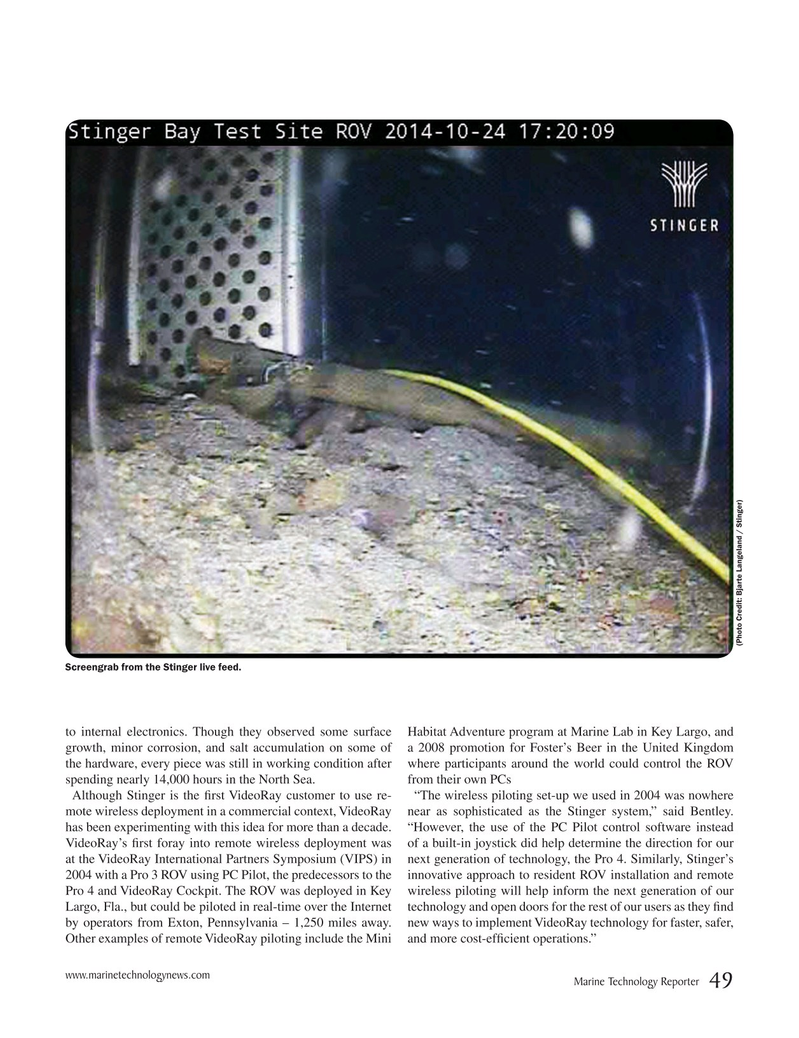
Page 49: of Marine Technology Magazine (September 2015)
Ocean Observation: Gliders, Buoys & Sub-Surface Networks
Read this page in Pdf, Flash or Html5 edition of September 2015 Marine Technology Magazine
(Photo Credit: Bjarte Langeland / Stinger)
Screengrab from the Stinger live feed.
to internal electronics. Though they observed some surface Habitat Adventure program at Marine Lab in Key Largo, and growth, minor corrosion, and salt accumulation on some of a 2008 promotion for Foster’s Beer in the United Kingdom the hardware, every piece was still in working condition after where participants around the world could control the ROV spending nearly 14,000 hours in the North Sea. from their own PCs
Although Stinger is the ? rst VideoRay customer to use re- “The wireless piloting set-up we used in 2004 was nowhere mote wireless deployment in a commercial context, VideoRay near as sophisticated as the Stinger system,” said Bentley. has been experimenting with this idea for more than a decade. “However, the use of the PC Pilot control software instead
VideoRay’s ? rst foray into remote wireless deployment was of a built-in joystick did help determine the direction for our at the VideoRay International Partners Symposium (VIPS) in next generation of technology, the Pro 4. Similarly, Stinger’s 2004 with a Pro 3 ROV using PC Pilot, the predecessors to the innovative approach to resident ROV installation and remote
Pro 4 and VideoRay Cockpit. The ROV was deployed in Key wireless piloting will help inform the next generation of our
Largo, Fla., but could be piloted in real-time over the Internet technology and open doors for the rest of our users as they ? nd by operators from Exton, Pennsylvania – 1,250 miles away. new ways to implement VideoRay technology for faster, safer,
Other examples of remote VideoRay piloting include the Mini and more cost-ef? cient operations.” www.marinetechnologynews.com
Marine Technology Reporter 49
MTR #7 (34-49).indd 49 MTR #7 (34-49).indd 49 9/1/2015 11:49:07 AM9/1/2015 11:49:07 AM

 48
48

 50
50
